
May 25, 2010
 CR Feature: The Best Goodbyes
CR Feature: The Best Goodbyes

So with the finale for the television show
Lost rapidly receding into the background, the reaction to the show suggests the question: what are the best "final episodes" in comics history? Like television, some of the best ones weren't official finales, or didn't quite take. With that general caveat in mind, here are ten of my favorite comics good-byes.
 1. Milton Caniff's last Terry and the Pirates Sunday: December 29, 1946
1. Milton Caniff's last Terry and the Pirates Sunday: December 29, 1946
There was never a better comics kiss, and that's saying something, especially considering Caniff himself probably put onto paper five of the ten strongest challengers. Instead of mailing it in, and the way Caniff was leaving the feature might have led a lot of creators to wind things down more generally, Caniff provided another classy reminder of Terry's unbeatable combination of shameless soap opera rooted in an idealized sense of human decency and the cartoonist's skill with cinematic scene-setting on the comics page. Reading that strip could be like eating the richest, most perfectly prepared chocolate cake.
*****
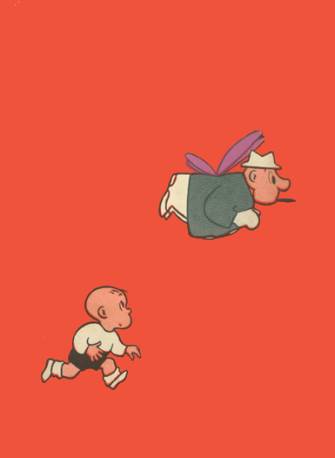 2. The final Barnaby run: January-February, 1952
Barnaby
2. The final Barnaby run: January-February, 1952
Barnaby was a gently rollicking and humane strip that didn't trade in sentimentalism but counted on a similar well of forgiveness in presenting the sometimes fussy idiocy fostered by its world of moderately out-sized characters. The final sequence (for which creator Crockett Johnson returned), where Barnaby becomes too old to have adventures with his slightly incompetent fairy godfather, stabs right in the heart and, further, underlines the temporary nature of newspaper comics art and art in general in a profound way.
*****
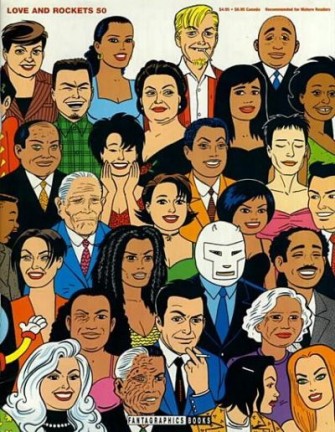 3. Love and Rockets Vol. 1 #50
3. Love and Rockets Vol. 1 #50
Two great moments among many in the final issue of one of the greatest serial comics: Jaime's Maggie and Hopey are reunited after several issues of stories that were driven to great extent by their absence in each others' lives. Gilbert Hernandez slips one of the biggest mind-fucks in comics history into his otherwise graceful Palomar story, where a certain character's appearance suggests the two major worlds of each creator are intertwined and provides a potential answer to the mystery behind one of the cartoonist's best comics stories.
*****
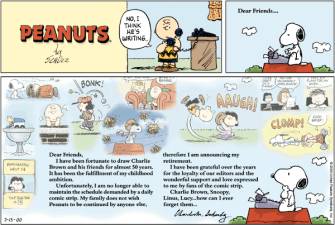 4. The final Peanuts: February 12, 2000
4. The final Peanuts: February 12, 2000
Most hardcore
Peanuts fans of my acquaintance were prepared for just about any character taking center stage in the final Sunday of this great strip except for the one who did: Schulz himself, with a letter of goodbye that felt in some way like the most unnecessary apology in the world.
*****
 5. Whatever Happened To The Man Of Tomorrow?
5. Whatever Happened To The Man Of Tomorrow?
A goodbye to a certain Superman for whom multiple generations of children had feelings ranging from fondness to an imprint of certain daddy issues, and an equally heartfelt farewell to a school of comics storytelling. Plus: good dog.
*****
 6. Animal Man #26
6. Animal Man #26
I think that the vast majority of this issue and the whole Pirandello-style intrusion of the writer into the storyline was inelegantly handled, then and now. And also this barely counts as an ending except as a cap to Morrison's admittedly distinctive run -- this iteration of the character's comic would run into at least the issues numbered in the 70s and the characters and concepts have been used by DC since then. Still, the idea of returning a group of supporting characters to life simply because it's the most human thing to do is a sweet, affecting and enduring idea, one that has more resonance today than it did back then.
*****
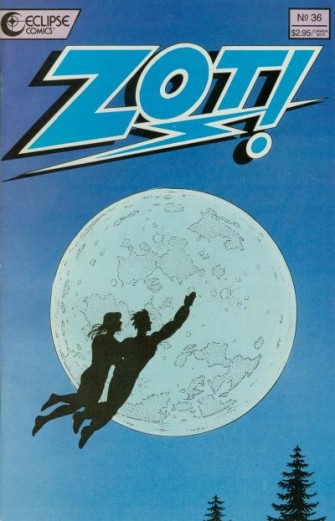 7. Zot! #36
7. Zot! #36
I've always contended that Scott McCloud's YA-before-YA comic book series worked best when it dug into how a certain kind of lonely kid negotiated fantasy -- a progression of immersion, negotiation, assimilation -- so for me the series' final issue becomes a grace note about how sweet it can be to go Someplace Else just for the sake of that experience.
*****
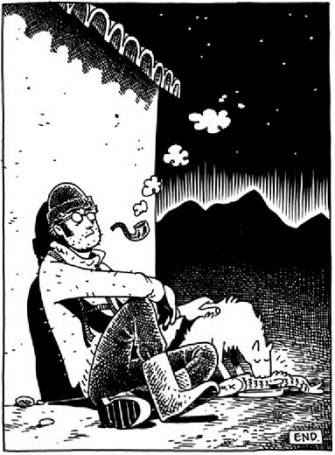 8. Far Arden, Epilogue
8. Far Arden, Epilogue
There are a lot of great endings to a lot of stand-alone graphic novels, but very, very few of them have that "final episode" feel the same way the last 10 minutes of a satisfying film isn't quite the same thing as the last installment in a long-running TV show. Kevin Cannon's
Far Arden was serialized, however, in the manner of a limited-episode BBC series. The nautical saga's final chapter gets its points by being as bleak as they come, both in its inversion of the energetic cartooning of the previous chapter and the sense that all there is to do after a certain point when things go wrong is to submit to the authorities and, when you get the chance, dwell on just what the hell went wrong. (The television equivalents would include the final
Sapphire and Steel and the third
Veronica Mars "we don't know if we're coming back or not" ruthlessly downbeat season finale.)
*****
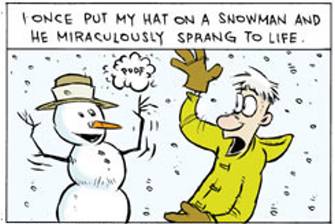 9. The Last Several Days of Franklin Fibbs: September 25 to October 8, 2006
9. The Last Several Days of Franklin Fibbs: September 25 to October 8, 2006
I enthused over
Franklin Fibbs in the middle part of the last decade the way I all but politically endorsed Richard Thompson's
Cul De Sac a few years later. Hollis Brown and Wes Hargis' strip was never better than it was
after cancellation, where a lot of humor was wrung from the strip's impending extinction and some of the more drastic measures used to keep it alive (such as booting its elderly protagonist for a kid version of same called
Little Fibbs). For the record, while I know they were joking I would have totally read
Fetus Fibbs, too. (This is another one with an easy television equivalent: the little-watched
Moonlighting self-assessment finale.)
*****
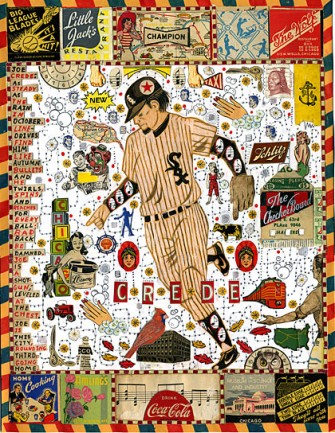 10. Tony Fitzpatrick's The Wonder, Vol. 3
10. Tony Fitzpatrick's The Wonder, Vol. 3
The artist/poet doesn't consider these books comics, but I've gone and claimed them anyway for the way their thematic progressions match more typical narratives beat for beat and for the power of their blend of words and imagery. In the final chapter of a three-volume study of his father's Chicago, Fitzpatrick goes darker than any other of the city's great chroniclers dared into what seems at times like an endless series of monsters, freaks and out-sized characters. What keeps these final pages from becoming intolerable is that the artist turns around and gives us four or five instances of his most positive portraiture, such as this lovely tribute to the Sox's Joe Crede.
*****
That's what I can think of for now.
.(JavaScript must be enabled to view this email address) The odd thing is that not a single manga series came to mind, not even when I sat and furiously thought about it. It may be that I don't follow the series with the biggest payoffs, I'm not sure.
*****
*****
posted 10:00 am PST |
Permalink
Daily Blog Archives
November 2019
October 2019
September 2019
August 2019
July 2019
Full Archives


